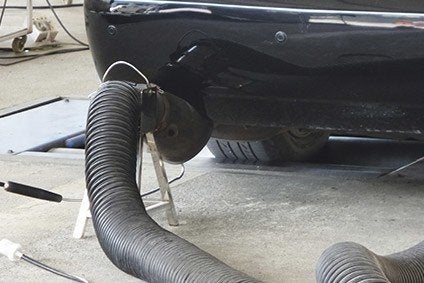
The climate crisis is not a new concern, however, as we get closer and closer to its tipping point, government mandates have overtaken social pressure in the attempt to limit global warming to 1.5°C. We are now entering a new phase where a host of environmental laws relating to mandatory reporting, carbon pricing, and carbon import tariffs have been introduced, forcing industries towards net zero.
In the automotive industry, a move towards carbon neutrality has begun, but below-standard targets and weak emissions reporting are leaving automakers open to regulatory penalties and long-lasting reputational damage.
Weak reporting

Discover B2B Marketing That Performs
Combine business intelligence and editorial excellence to reach engaged professionals across 36 leading media platforms.
Net zero refers to cutting greenhouse gas (GHG) emissions to as close to zero as possible, with any remaining emissions being then ‘offset’ using carbon offsets or credits. Companies typically first aim to achieve net zero operations by reducing their Scope 1 and 2 emissions, then achieve net zero value chains by reducing their Scope 3 emissions. It is important to set reduction targets and emissions reporting protocols to track a company’s performance over time.
However, there is little standardisation in emissions disclosure across the auto sector. Companies calculate emissions differently, including and excluding categories of emissions as they see fit.
For Scope 3 emissions, calculations are based on geographical and fuel consumption assumptions that can be determined by the company. For instance, tank-to-wheel emissions are CO2 emissions derived from the driving of a vehicle throughout its lifecycle. While Renault determines its emissions based on a vehicle’s lifetime of 150,000km, Ford prefers to use a 241,402km lifetime.
Scope 3 targets and reporting should be prioritised
To their credit, many automakers have quite ambitious Scope 1 and 2 emissions reduction targets, with many making decent progress on those targets. However, these emissions only account for around 1% of total emissions in the auto sector. It is important to reduce emissions, but any actual Scope 1 and 2 reductions are largely insignificant to reaching net zero.
Many companies are using their single or double-digit yearly reductions in Scope 1 and 2 emissions to hide their lack of reporting on Scope 3 emissions or, quite often, an increase in Scope 3 GHG emissions.
The need for improved metrics
The simple reporting of emissions, independent of how transparent it is, does not paint a full picture of a company’s commitment to net zero. A large company will naturally emit more, than a smaller one, and emissions reporting does not allow us to compare the two. In judging a company’s long-term environmental performance, it is more beneficial to set targets based on metrics, like emissions intensity.
Emissions intensity is a metric that allows us to compare companies of different sizes and assess how efficiently they are decarbonizing. It’s calculated by either dividing emissions by number of vehicles produced/sold or by dividing emissions by kilometers traveled by vehicles sold.
The metric is less useful if the automaker does not include Scope 3 emissions in the calculations. European and US automakers such as Volkswagen, Stellantis, and GM, while most non-Western automakers tend to exclude them. Emissions intensity is also subject to the same vehicle lifetime assumptions made during calculating Scope 3 emissions. Overall, it’s still a more useful metric to assess whether companies are decarbonising independent of their size or emissions.
As emissions reporting becomes mandatory and regulated, inconsistencies in measuring emissions will be reduced. However, automakers should already adhere to a variety of international standards from the GHG Protocol and the Science Based Targets initiative (SBTi), which many do not.






